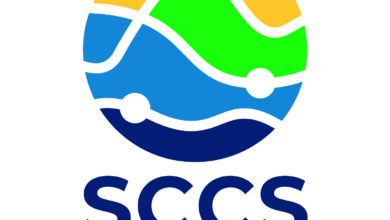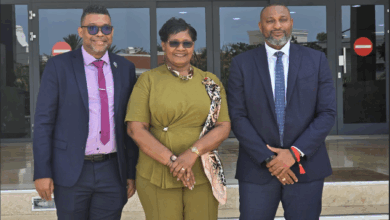It is a pleasure for me to participate in this session on Leadership Uniting Vision and Purpose at this Eighth Annual General Meeting of the Pan Caribbean Partnership against HIV/AIDS (PANCAP).
I wish to take this opportunity to congratulate PANCAP and, in particular, its Regional Coordinating Mechanism, its executive management committee, the Director and staff of the PANCAP Coordinating Unit and its affiliates, chief among which are the Caribbean Network of PLWA (CRN+), the Caribbean Committee of HIV/AIDS Programme Coordinators (CCNAPC), the Pan Caribbean Business Coalition against HIV/AIDS and the Caribbean Media Broadcasting Programme (CMBP).
Added to these are all the national HIV/AIDS programmes, the regional institutions and the international partners that have contributed and sustained this unique network I am aware of the role of the Caribbean Community, in particular former Prime Minister Arthur who initiated the first ever international conference on HIV/AIDS in Barbados in 2000 and current Prime Minister Douglas who since that time has been among the chief advocates.
I am also aware of the foundation role of the CARICOM Secretariat and the original core partners that nurtured this partnership in its infancy. And now at its eighth AGM today, it is fitting to plot the years ahead and to examine the role of leadership: its vision for the future and its plan of action. It is fitting also that based on a process of intensive consultations within the partnership, that you have arrived collectively at a vision: To substantially reduce the spread of HIV in the Caribbean through sustainable systems of universal access to HIV prevention, treatment, care and support.
Even as I pondered on my contribution to this panel and read the voluminous documentation, I could not help but marvel at how this partnership with over 80 institutions and countries could dare to dream of achieving Universal Access to HIV/AIDS prevention care and treatment by 2010. I am convinced that with leadership uniting vision and purpose the dream could become a reality.
Setting the Tone
The topic of this session is a challenging one. It requires either a pronouncement on the role of PANCAP leadership to date or a set of prescripts by which the PANCAP leadership can formulate and achieve its vision(s). My presentation will not at the onset try to deal with either of the two assumptions. Instead I will approach this presentation by trying to reflect on:
• the international and regional context in which a vision for PANCAP is formed and crystallized
• the preconditions for connecting vision into purpose; and
• the attributes for transforming vision into purpose and action
Arising out of an examination of these principles, I hope to be able to connect up with the issues as to how, why and in what ways the leadership of PANCAP could truly give meaning to its vision to achieve universal access.
The International and Regional Context of HIV/AIDS Agenda
In dealing with the international and regional context of the HIV/AIDS Agenda, it is fair that you should expect a recitation of the epidemiological profile of the global and regional situation. However, since you are all aware of these trends, I need only refer you to the stark profile of the disease in the Region stated in the introduction of the UNAIDS Roadmap on Universal Access in the Caribbean (July 2008) as follows:
At the end of 2007:
203,000 people living with HIV up from 210,000 in 2001 (when this partnership was formed) adult prevalence of 1.1percent, the second most HIV affected region in the world; the first most HIV-affected region in the Americas, Increasingly affected women; 14,000 deaths in 2007 or 38 per day; leading cause of death among 25-44 years- old; 20,000 new infections (55 per day) and high HIV prevalence among men who have sex with men (MSM), Female sex workers (FSW), prisoners, crack-cocaine users and young people…
What however is of equal importance is the international and regional environments that facilitate or restrict what can possibly be achieved in the fight against HIV/AIDS. In this regard, consideration must be given to the global perspective of development in which HIV/AIDS is important and relevant, yet not the dominant variable. What do I mean?
For almost two decades after World War II, Social Scientists, in particular anthropologists and sociologists, subscribed to the division of the World into “traditional” and “modern” societies. Subsequently, the economists, in particular, linked “economic development” to the concept of “modernization”. The cold war and the hegemonic struggles in the 1950s -1980s, further reconstructed the world into socialist/communist and capitalist systems of economic and social development. Then, with the dismantling of the Berlin wall in 1989, a uni-polar world order of Globalization emerged with the dominant neo liberalism philosophy.
The absorption of Eastern Europe, the bastion of communism, into the Europe Union was a signal event that has direct consequences for development programmes and policies, such as those being addressed at this AGM. So do the negotiations leading to the recent signature of the Economic Partnership Agreement by the Caribbean Community between CARIFUROM States and the European Union. Such negotiations and the ensuing one with Canada tend to test the viability of the movement toward a CSME, in which the majority of PANCAP partners are located.
There are other imposing global pressures of which the current global financial crisis is the most recent cause for concern to the Region for the possible negative effects on our economies in much the same way as was 9-11, which reconfigured the international security arrangements, with increasing costs for securing our national borders. When taken together with the continuous dislocations of natural disasters, the environmental threat through climate change, the crisis generated by the rising price of oil, all these international events create a state of uncertainty for the Region’s economies with certain implications for our social programmes like HIV/AIDS.
At the same time, there have been major global advances which provide tremendous opportunities. Chief among these are the melding of genetics and chemistry to produce the recombinant DNA biotechnology’s gene revolution leading to the productivity of plants and animals; the developments from proven ways to make human insulin from bacteria to new ways to make protein cheaper and abundant; and the production of anti-retroviral drugs (ARVs) to sustain the lives of PLWA as productive citizens of our Community. Yet, with no known vaccine on the horizon, there is yet no known cure for HIV/AIDS, a situation unlike the NCDs or even the other sexually transmitted infections (STIs). Perhaps the most pervasive international development is the explosive marriage between computers and telecommunications in an ICT revolution which is not only changing the global configuration but forcing nations to rethink the essence of their philosophies: economics based on scarcity, governance based on secrecy, laws based on exclusive ownership, management based on hierarchy.
How do these international and regional factors actually affect the HIV/AIDS agenda? I believe that addressing the preconditions for connecting vision to actions will assist with the answer to this question.
The Preconditions for connecting visions and purpose
The global system that pertains to trade and commerce and other economic determinants is guided by the international rules, negotiated globally within the World Trade Organization. The Trade- Related Intellectual Property system (TRIPS) is one illustration of the type of programme with respect to access to cheaper drugs that needs attention so that countries like ours in the Caribbean could afford and improve our regimes for care and treatment of those that are afflicted and affected by a range of non- communicable and communicable or socially transmitted infections, like HIV. Indeed, the incisiveness of the Nassau Declaration of 2000 by the CARICOM Heads of Government recognized that “the health of the Region is the wealth of the Region” should not be underestimated. It signaled the need for building strong regional capability through functional cooperation for tackling those impediments to increasing the health status in our Region. This must be seen as among the first preconditions of connecting vision and purpose. Practical components to this perquisite include:
• establishing a strategic plan that clearly states how objectives are to be achieved
• building capacity among regional institutions to execute the plan
• ensuring that activities of the plan have the desired effect and benefit the targeted groups in particular the most vulnerable, the poor and the young ( it goes without saying at the level of the countries)
A second precondition focuses more specifically on the newer global orientations to funding HIV/AIDS.
The Global Fund for HIV/AIDS, TB and Malaria (GFATM) to which wealthier nations contribute, has designed common standards, rules and regulations for its awards to mainly developing countries. (It is worth acknowledging that Barbados is one of the very few developing countries that has contributed to the Fund) What this means for PANCAP and other programmes is that as more countries, multilateral agencies and philanthropic organizations commit to increasing levels of resources to the Global Fund, less are tending to become available through bilateral arrangements. This is most likely to redefine the scope of PANCAP’s resource mobilization strategies, which must be seriously considered in the interest of PANCAP’s sustainability.
Between 2002-2008, US$11.3 Billion have been allocated by the Global Fund in competitive grants to 136 countries. These are laudable developments from which several countries in the Caribbean, including Suriname, Jamaica, Haiti, Guyana, The Dominican Republic and Belize have benefited. So have regional programmes of PANCAP, The OECS and CRN+.
However, among others, the Global Fund regulations in some ways run counter to the philosophy of our regional movement to achieve a CSME in which all countries whether or not they are classified as highly, moderately, or lowly developed, coexist and comprise a “Community for all“. Notwithstanding revisions in these regulations that would guide the round 9 competition of the Global Fund, a second precondition for PANCAP is for increased and sustained advocacy on the part of our regional representatives on the Global Fund Board. They need to continue to make the case, substantiated by sound research, for further revisions that accord with the spirit and realities of our Region which are distinctive from Africa, Asia and even Latin America.
Another precondition is implicit in the previous one dealing with Advocacy. It is that PANCAP needs to ensure that its policies for accelerating the approaches to reducing the prevalence of HIV in the Caribbean are backed by solid research and surveillance data. Already among UN agencies there is the expressed view that too much funds are going to HIV/AIDS in relation to the other programmes including NCDs which together account for 10 times the amount of deaths. This can be refuted not so much by arguments associated with “the exceptionality of AIDS” but by demonstrating that some of the issues that are being tackled by HIV/AIDS such as behaviour change to reduce stigma and discrimination, will enhance the general understanding on the interventions for a whole range of diseases – both non-communicable diseases (NCDs) and Socially transmitted diseases (STIs).
The reverse side is to fully investigate the case put forward by some, that HIV is a communicable disease and should be increasingly dealt with as such. In this regard, policy-makers are required to know whether the public health approach to HIV/AIDS jointly with NCDs will be efficient and cost effective. The evidence required includes the relative economic burden of all the diseases. Current estimates reveal that HIV/AIDS accounts for the highest mortality among the 25-44 age range, the most productive years. Hence it could be assumed that inattention to prevention, care and treatment will have severe economic impact on the GDP, growth and development of the Region’s economies. Only research can define the true position on which meaningful policies can be made form years the highest concentration of deaths.
The preconditions that are being put forward are not exhaustive by any means but are seen to be some of the more important ones: a strategic plan, capacity building and institutional strengthening, advocacy and research.
Attributes for transforming vision into purpose and action
Having identified the preconditions for connecting vision and action what are those factors or attributes that help to transform vision into action? I wish to suggest two (even though there may be more). They are an enabling environment and leadership, not necessarily in that order of importance. In fact, given the environment, that is the international and regional context of HIV/AIDS that has already been described, depends on the type and quality of leadership to stimulate or refashion it.
What are the characteristics of leadership required?
Leadership is a complex issue. Notoriously well documented in numerous books and articles, training courses and TV programmes. It comprises a highly complex set of behaviours accumulated over time.
One essential ingredient of high performing individuals and organizations is creativity. But creativity is not just a set of skills, traits or narrow competencies to be learned or taught, it comes from a deep rooted passion and urge to think differently. Creative people push the boundaries and seek new ways of seeing, interpreting, understanding and questioning.
Leadership is also primarily about influence and change: influencing change in the environment and others so that talent can be released and maximized. It means removing structural and cultural barriers so as to increase interaction and dialogue and reduce the practice of “selfish” individualism.
Most business schools, including our own at UW, I are locked into the values and norms of individualism and individuality. Yet this practice is more likely to result in narrow forms of thinking and self interest and is unlikely to generate creative thought or action. Research on individualism in international leadership shows a mixed classification: villains such as Hitler and Mussolini, heroes such as Caesar, Cromwell, Napoleon and Lenin and The Moses’ or deliverers like Mahatma Gandhi, Marcus Garvey, Martin Luther King and Nelson Mandela. For the most part, the heroes and deliverers are exceptional.
Given the dynamics of PANCAP, the international and regional context in which it functions and the prerequisite of connecting vision and purpose, it is necessary to promote collective leadership. First of all, the construction of the Caribbean Regional Strategic Frame 2008-2012 (CRSF), from my reading of the process, is an illustration of collective leadership. It engaged the stakeholders in discussing, refining and formulating its elements.
The proposed structure of implementing the CRSF reflected in the connectivity of the various partners in the network recognizes the value of inclusiveness and mutual responsibility for proper running and overall leadership of the component partners in accordance with stated and agreed principles. In this regard, the distinction between collective leadership and an executive group such as the RCM and the administrative unit (the PCU), needs to be clear. They are expected to connect the dots of leadership at the country level and to ensure the collation and coordination of purpose and action. In essence, it is actually the vision of this AGM that prevails as a guiding principle to the RCM. No other formula can be ultimately sustainable.
The requirement of collective leadership is fully illustrated with respect to the major thrust of the CRSF to achieve Universal Access to HIV/AIDS prevention, care and treatment by 2010 .Whether or not the timelines can be achieved, the essential feature is that all stakeholders through a process of consultation, agreed on common elements and broad strategies enunciated in the pledge by Prime Minister Douglas to UNGASS 2008:
• Harmonized international partnership.
• Improved and integrated network of services for prevention, diagnosis, treatment, care and support.
• Introduction of supportive legislation and a policy framework to protect the vulnerable populations, in particular men who have sex with men, commercial sex workers and prisoners. They will also place emphasis on the particular needs of the disabled and children, for they too are vulnerable.
• Every Caribbean woman, man and child to have access to relevant information, knowledge and support services by which to take preventive action.
• Organized regimes for care, treatment and support.
• Drastically reduced spread of this disease through universal access.
These are ambitious targets of Universal access by 2010. If they are to be achieved then it would take exceptional individual leadership and an exceptional enabling environment. However, the possibility is more realistic when confronted with collective leadership, built on strategic information education and communication, a cadre of partners imbued with the vision, partners committed to working as a collective and assuming responsibilities and obligations of the partnership in order to share its benefits
I end with my best wishes for a successful AGM and for the growth and sustainability of this partnership that has such a vital role to play in the fight against HIV and AIDS. It is my hope that this partnership will be emboldened by the direction toward collective leadership through which:
Vision animates, inspires and transforms purpose into action.
It articulates a view of a realistic credible, attractive future for PANAP.
Vision is a target that beckons{Bennis and Nanus}
Bennis W and B. (1985) Leaders: The Strategies of making Change, New York Harper Row.





